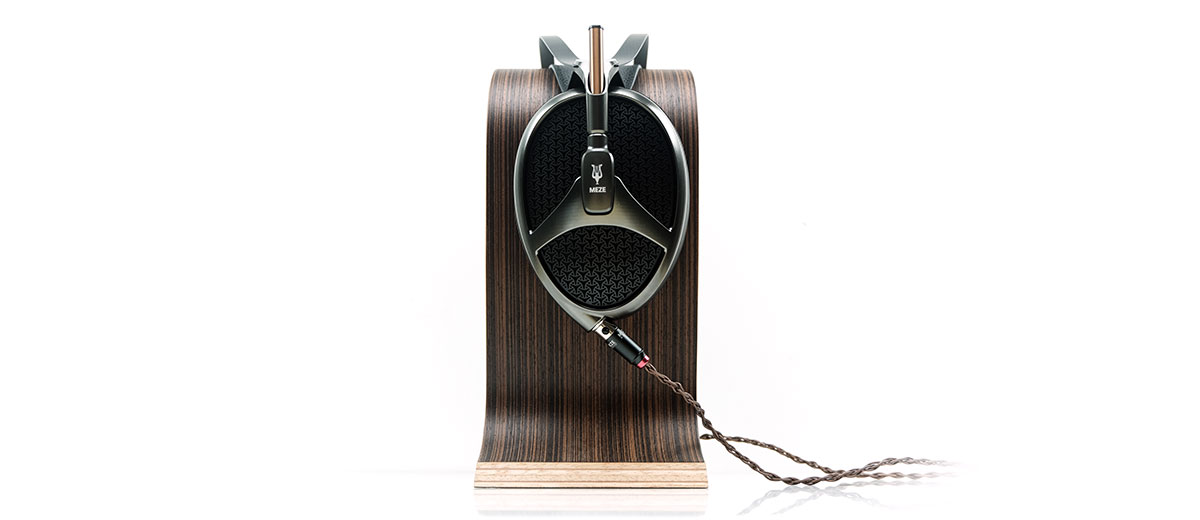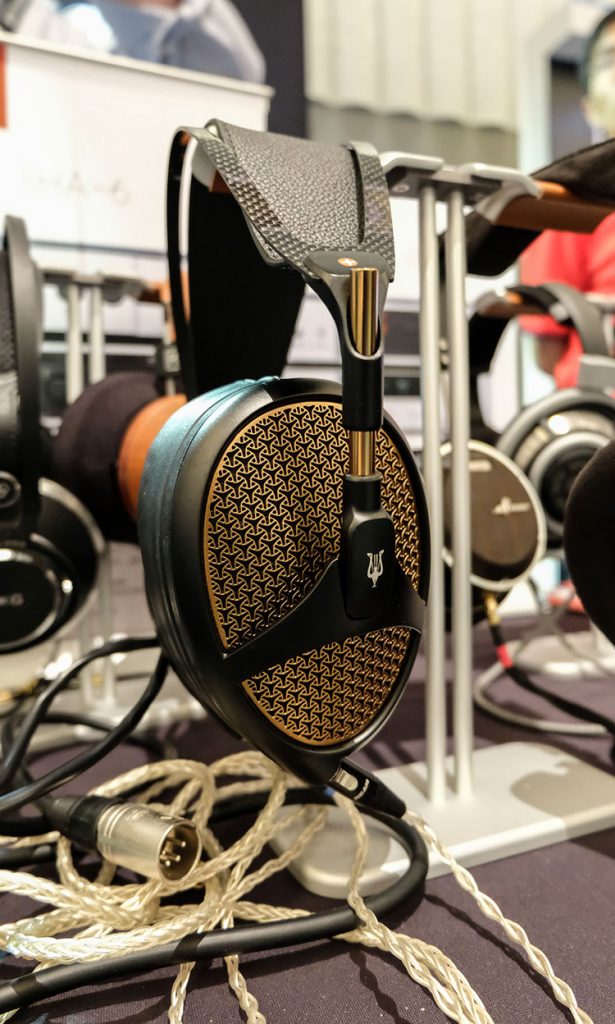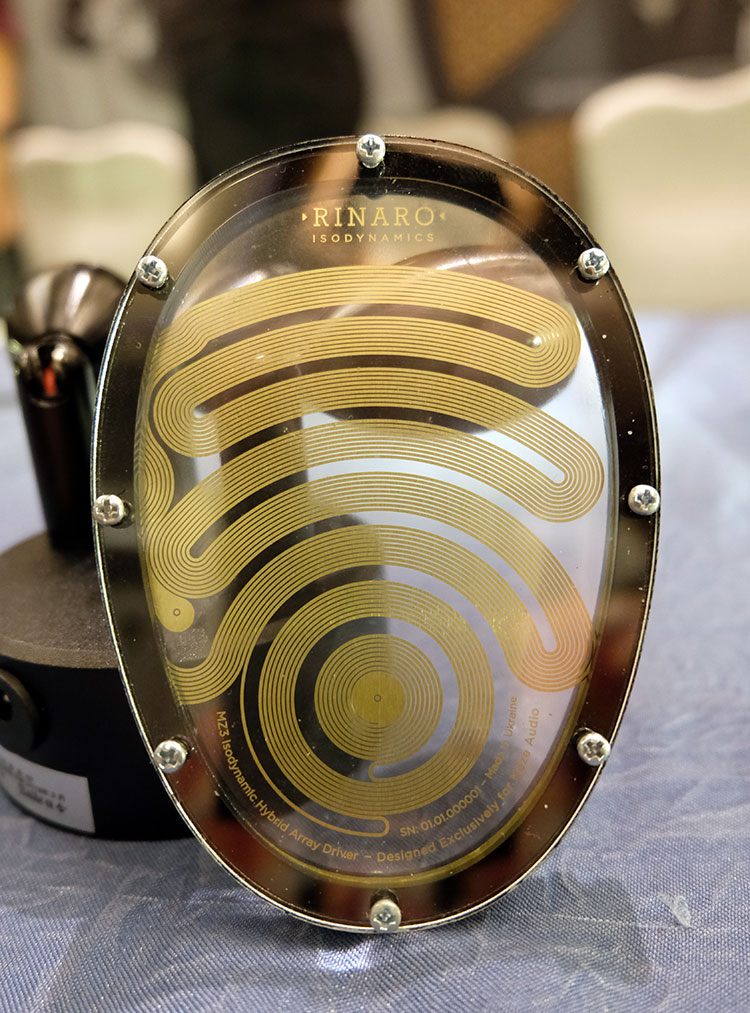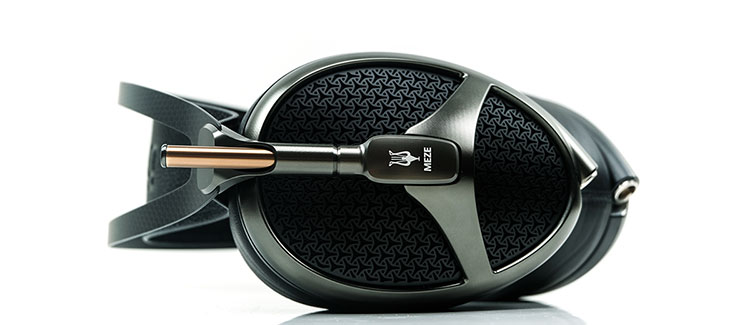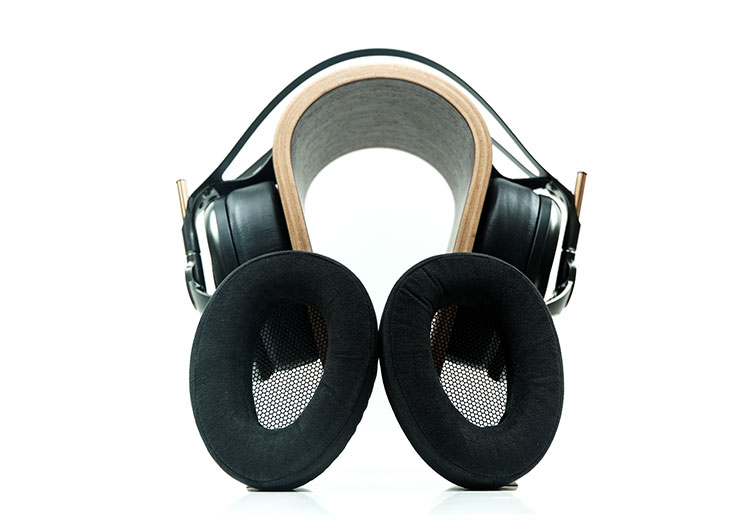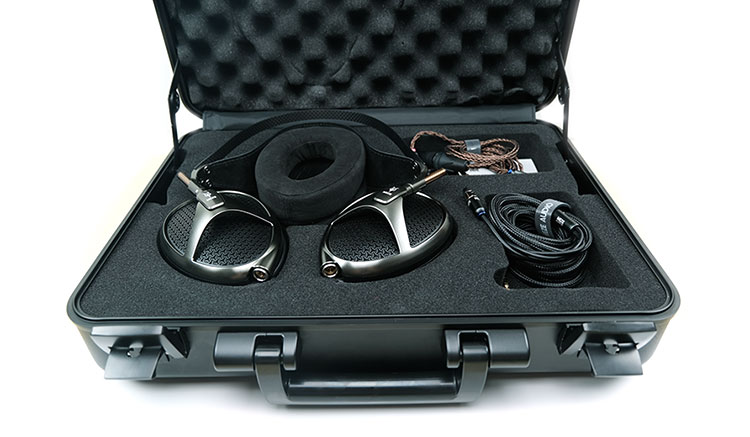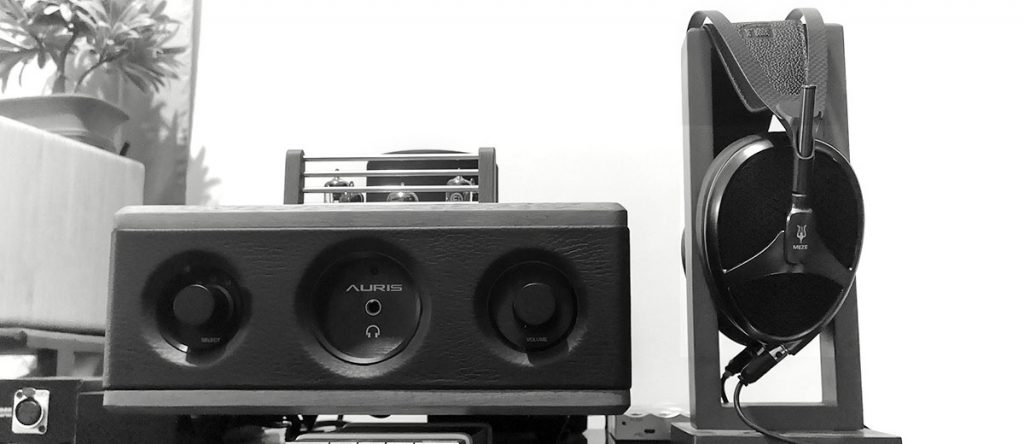Disclaimer: The Meze Audio Empyrean sent to us was purchased by us and is an ex-demo unit with burn-in. We thank the team at Meze for giving us this opportunity to review at this early stage.
To read more about the Meze Audio products we reviewed on Headfonics click here.
This is an exciting First Contact for me today because it is Meze’s new flagship $2999 Empyrean isodynamic hybrid array headphones. This is a headphone I have seen lots of versions of over almost 12 months and spoke at length with Anton Meze about how it was developing during that time.
The Story
Our first indication that Meze may be onto something a bit special for their next headphone after the Neo and Classic range was at CanJam Singapore 2018. You can read our in-depth report here.
The Empyrean was on display during the show and also a showcase of their Rinaro collaborative isodynamic drive design. I was lucky enough at the time to also have a long chat with the CEO of Rinaro, Pavlo Shymanovych.
It was he who shed some interesting light on the unique features of not only the driver but also some of the unique design elements in this flagship headphone. Elements such as the magnetic pads formed part of the final tuning and performance rather than just the seal and comfort and the hybrid diaphragm design itself.
Hybrid Driver
The diaphragm design is incredibly unique with a specific purpose in the shape and flow. This is a continuous trace but with two unique shapes. At the top is a curved line switchback trace which focuses on the low-end delivery (bass) and the circular pattern at the bottom is designed to focus on the mids and highs.
Now the positioning of the trace is such to get that circular pattern directly over your ear. In doing so there should be a qualitative reduction in non-reflected soundwaves and an improved perception of imaging a better staging.
The hybrid aspect of the design can be found in how Meze has arranged the magnets on either side of the diaphragm. The symmetrical placement of the neodymium magnets on either side is to maximize the efficiency of the isodynamic magnetic field.
Ideally, the diaphragm will operate in a uniform and consistent manner as a result. This is critical given the dual trace design of the diaphragm for both lows and highs.
Build Quality
Final Design
“Out of the Box” so to speak not much has changed in terms of external design and aesthetics since we first saw the Empyrean. That is a really good thing to be honest because the look is both striking and exquisite.
The Empyrean CNC aluminum grilled faceplates, in particular, stand out on first impressions. They have less of a muscular Audeze or the ‘window shade’ Hifiman look and more of a velvety, almost ‘Persian design’ feel to the intricate grill patterns.
It is far more elaborate up close in real life than any picture can adequately convey. The machining behind this must have been very complex and time-consuming to get the patterns perfectly correct.
You will notice that the prototype in Singapore 2018 had a black and gold finish and this one is more gunmetal and black. I do believe at some point the black and gold finish may become available. Personally, I prefer the current product to use a more discreet external color toning.
Comfort
At 430g it is not the lightest headphone in the world and certainly a good deal heavier than the 290g Ether 2 from MrSpeakers. That being said, the initial impression on the head is amazing, to be honest. The gimbal and pivot system is incredibly smooth and noise-free.
You can literally turn the cups on their central steel column 360 degrees without any undue concerns about pressure or cracking.
Meze has really nailed the pressure distribution with that dual carbon fiber archway and leather arched strap design. The strap itself has the arch ironed right into it and it makes an immediate difference by creating a huge contact area with the top of your head.
The pressure dissipation combined with those deep pads (Alcantara or perforated leather) makes the Empyrean seem much lighter and comfier than a 430g weighting would initially suggest.
There is not too much side clamping either and with 2 choices of deep-wall pads, perforated leather, or Alcantara, you shouldn’t have an issue with sweat or itchiness after long periods. By the way, the pads are magnetically lined and just clamp on and off.
The pads are really easy to change and do not look like they will go flat really easily after prolonged use. (Early days on that but I will confirm on full review).
Packaging & Accessories
I think it was around July that Meze first floated the idea of a proper travel case but it was not until the HK AV Show in August that I got a first peek at it.
The final production version is the same save for the accessory listing which now includes the option for a 1.2m 3.5mm connection or a 3m 6.35mm OFC cable.
You can also optionally upgrade to Furukawa copper cables which include a balanced 4-pin XLR, 2.5mm, and 4.4mm connection option.
At a later stage, I am told Meze will add silver-plated upgrade cables terminated in 2.5mm, 4.4mm, 6.3mm, and XLR. We received the 4-pin Furukawa OFC XLR option so our testing in the main review will be based on that.
Protective Travel Case
The aluminum case is on the same lines as the Audeze travel case though in more of a briefcase form factor than the deeper stubbier container for the LCD series.
I believe it is element resistant also. It is an excellent alternative to cardboard packaging and looks very handy indeed for transporting the Empyrean around with plenty of foam protection on the inside.
The box I have is the initial batch run which is actually not deep enough by around 1″ or so. It tends to put a little pressure on the headband of the Empyrean when closed. I have been told the new cases shipping is, in fact, deeper and this will not present the same issue.
Initial Sound Impressions
Early days yet but the Empyrean is shaping up to be quite a special-sounding headphone and definitely unique in its presentation to the likes of competing flagships such as the Final D8000, LCD-4, and the Hifiman Susvara.
Meze asked me in Singapore about what I thought of the sound quality and I blurted out “impressively organic” which in a way I still feel is the case on initial impressions of the final production sample.
However, it is also a bit challenging to say briefly what the exact sound signature is of the Empyrean because the pads alter the sound signature in a marked fashion. Thus, you get two distinct signatures as opposed to just one.
Leather Pads
On initial impressions, the leather pads feel a bit more reference in their presentation and the detail is indeed excellent. I don’t honestly find the leather pad tonal alterations to produce a cold or clinical sound, an HD800 is most certainly not.
However, With the leather pads, you get quite a neutral sound with a little more upper mid and lower treble emphasis which seems to jive with the perception of the Empyrean having a very linear and flat low-end to 1k frequency response.
It sounds incredibly coherent but may lack a little warmth and body compared to the Alcantara pads juicier and more expansive presentation.
Alcantara Pads
With the Alcantara pads, I get some more low-end to lower-midrange warmth, a larger soundstage, and generally a smoother sound. The clarity of the leather pads has been swapped for some slightly laid-back musicality.
Instead of that cleaner tone and a more intimate upper-mids to lower-treble region emphasis, you get something more expansive but at the same time slightly darker in tone but without sounding shelved down.
The Alcantara pads pair very well for my moodier synth-wave tracks where I need some excellent width and depth. I find myself opting for the leather pads more often than not for vocal performances.
Power
It does seem from our brief time with the Empyrean thus far that it is not the hardest planar headphones out there to drive. Certainly, much easier than the Susvara, HE6, and the new MrSpeakers Ether 2. 32Ω and 100dB sensitivity is impressive, to be honest.
It is a testimony to Rinaro’s driver design combined with the pads for getting such a good response with lower levels of power.
I will say, however, that I still think you would be mad to plug these exclusively into a phone or DAP (outside of the Cayin N8). The fact that Meze has not supplied any cables with a 3.5mm termination should indicate their thoughts on how best to power the Empyrean.
Amp Testing
Our initial testing on our two award-winning amps, the tube-based Auris HA-2SE and the solid-state Formula S from XI Audio indicates that the Empyrean loves quality over quantity.
The Formula S is best paired with the Alcantara warmer pads and the HA-2SE with the more neutral-sounding leather pads. Neither of them required any really heavy volume. My normal pre-amping levels of the Formula S were actually turned down by around 25% over Susvara’s usual levels if that is an advanced indication.
Stay Tuned!
There is definitely lots more to explore with the Empyrean beyond what we have outlined in this First Contact feature.
The pad tonal variations alone mean there are a lot of interesting pairing opportunities not to mention the mini-XLR cable connectors providing me with a few cable rolling options beyond the cables supplied in the package.
At this early stage though the Empyrean is a fabulous but unique sounding headphone. I already think it has the chops to be a potential contender for the 2019 awards recognition and it is just January!
Meze Audio Empyrean Technical Specifications
- Driver Type Rinaro Isodynamic Hybrid Array
- Operating Principle Open
- Ear Coupling Circumaural
- Frequency response 4 – 110,000 Hz
- Impedance 31.6 Ω
- Nominal SPL100 dB (1 mW/1kHz)
- Maximum SPL >130 dB
- Total Harmonic Distortion (THD) <0.1%
- Weight 430 g




